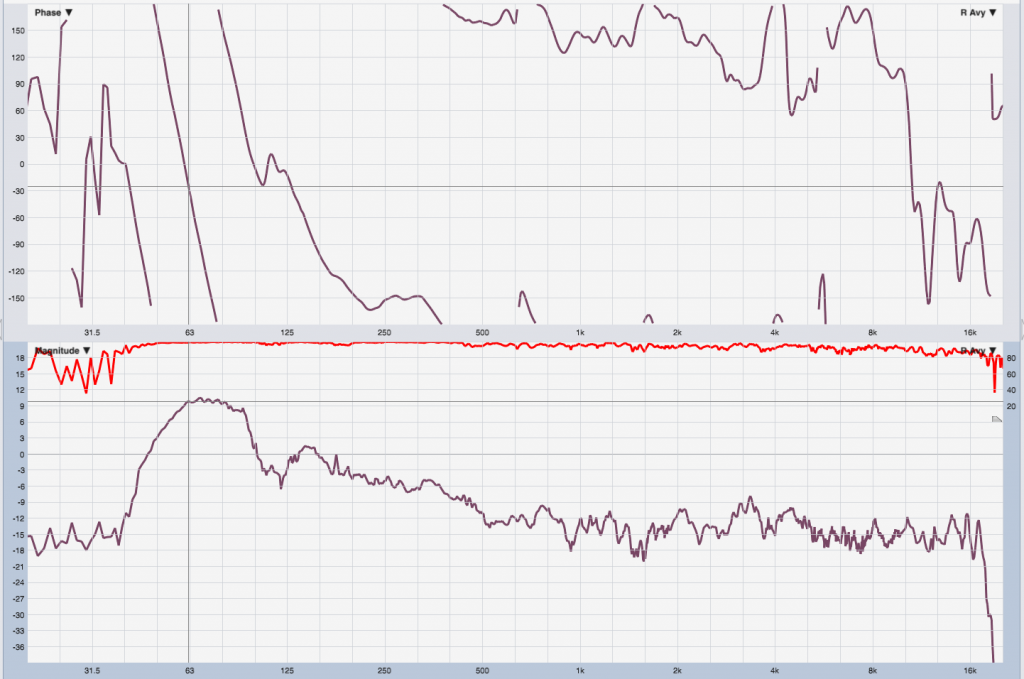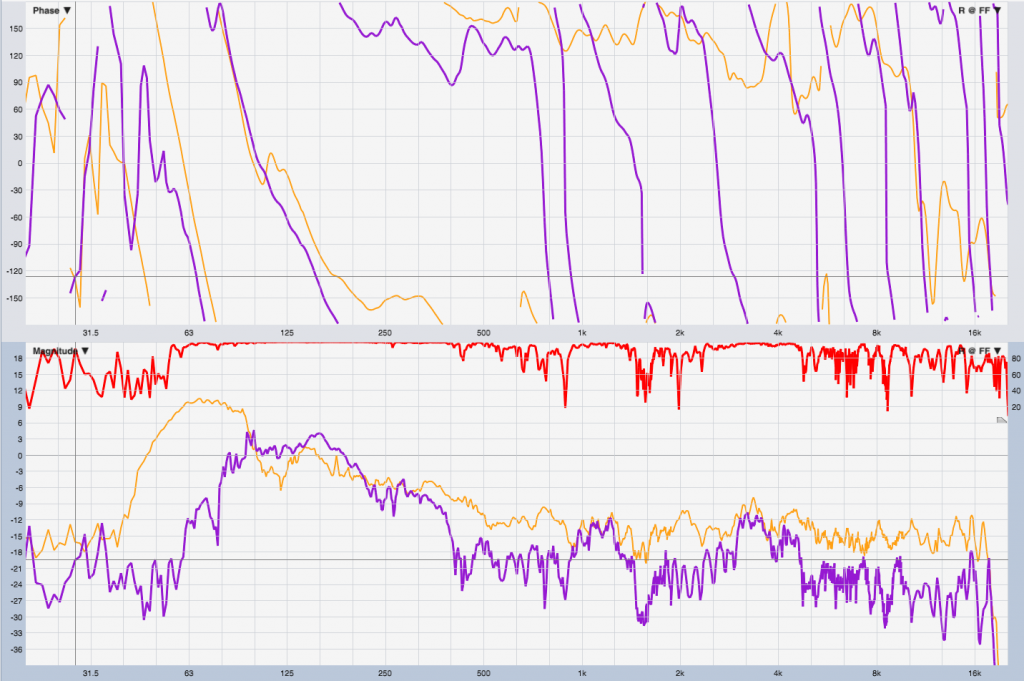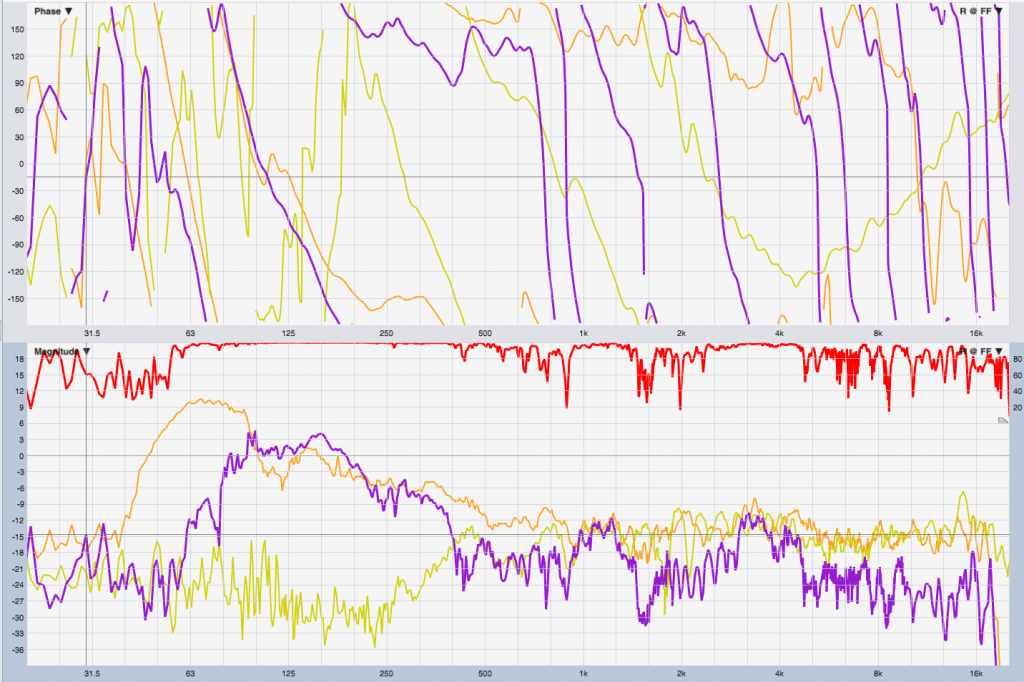Trimming the Fat
My mixing technique is largely subtractive in nature (remove things from the mix that don’t need to be there). If I’m getting a lot of hi hat bleed through the other drum mics, I’ll pull the hat fader back. I’ll high pass, low pass, and mid-scoop mix elements that aren’t contributing necessary energy (or contributing too much energy) in those frequency ranges. Basically, trimming all the fat.
Lately I’ve been interested in applying the same concepts to my system optimization work. This school of thought is inspired largely by the 360° system tuning concept introduced to me by my friend Jim Yakabuski.
Here’s my shot at applying that concept to a set of infills located at the corners of a stage.
Three traces were taken over the coverage of the right side of the PA (near, mid, far) and their average looks like this:

(The sub bump is a little high and was reduced by about 6 dB later in the optimization process).
Down in the first few rows, we’re underneath the main hangs and so out of the HF coverage. Here’s the response of the mains in the area that is intended to be covered by the infill (purple) compared to the previous average trace as a reference (gold):

It’s obvious that the LF coverage is totally sufficient down here, and we really just need the infill to contribute the missing HF information.
Here’s the raw response of the infill from the center of its coverage area, again compared against gold:

HF response is exactly where we need it. Let’s roll off the LF so that the fill will combine with the OFFAX LF from the mains and bring the entire response back closer to the target.

We can see how the purple (mains LF) dovetails nicely with the yellow (fill HF).
What I didn’t have time to grab is a combined trace to compare to target after time was set. This show was an hour behind due to rain, and so in those cases I will only stop to measure things that I need to measure in order to adjust a parameter, and the verification traces get skipped in lieu of a final by-ear check at the end.